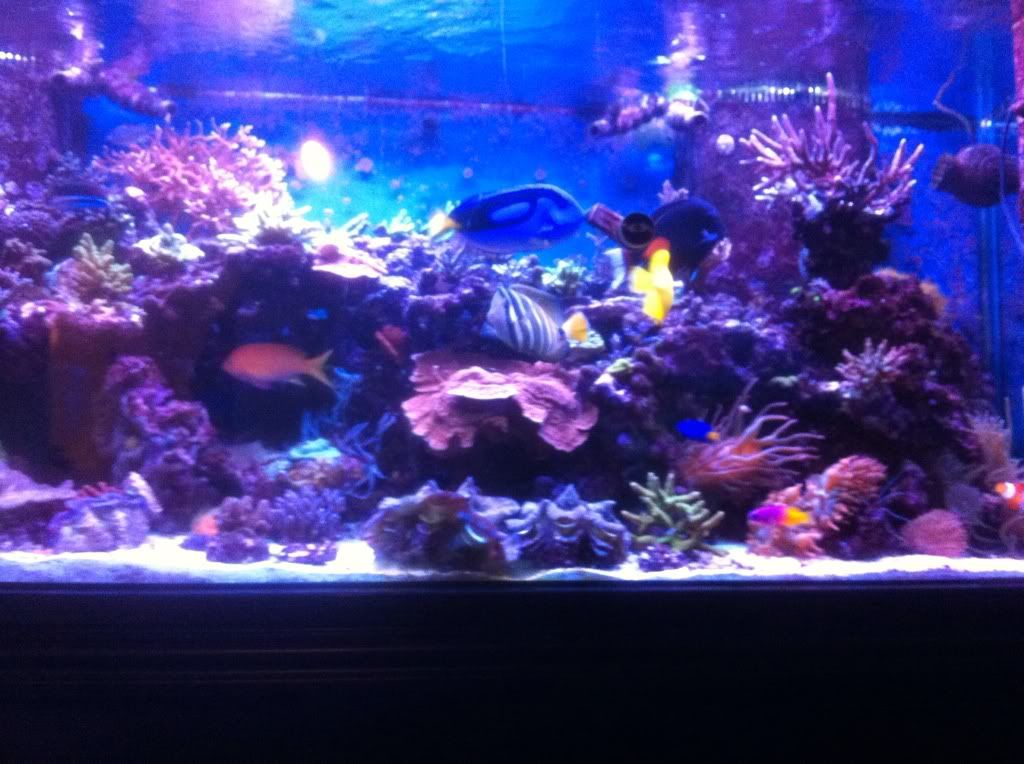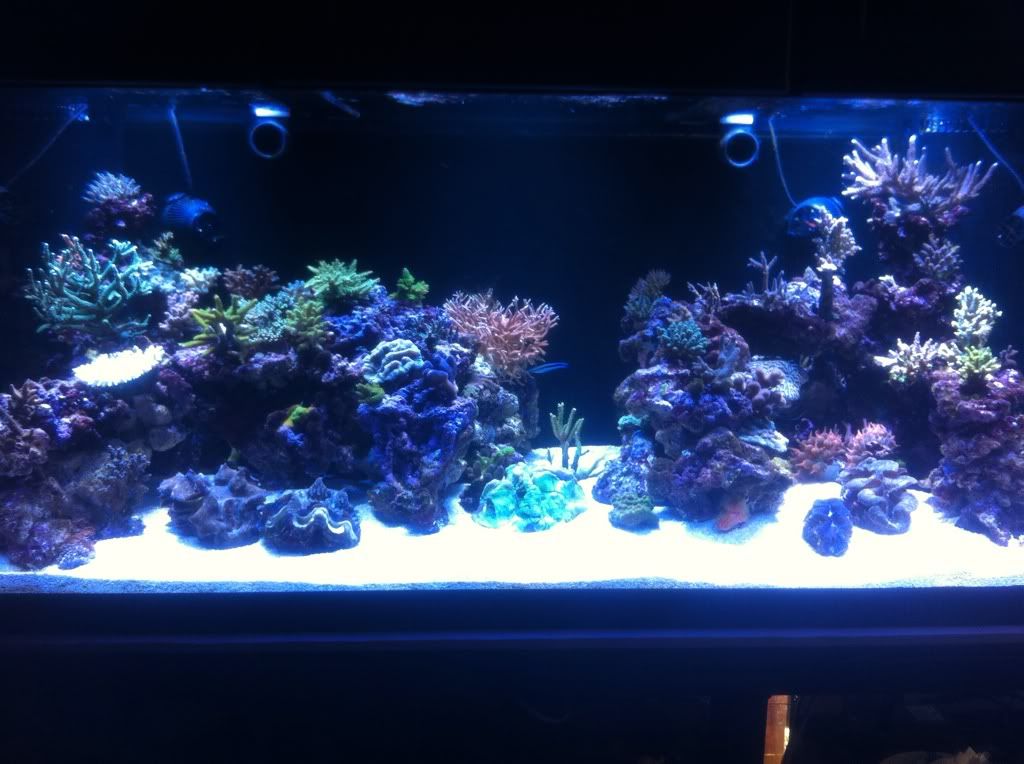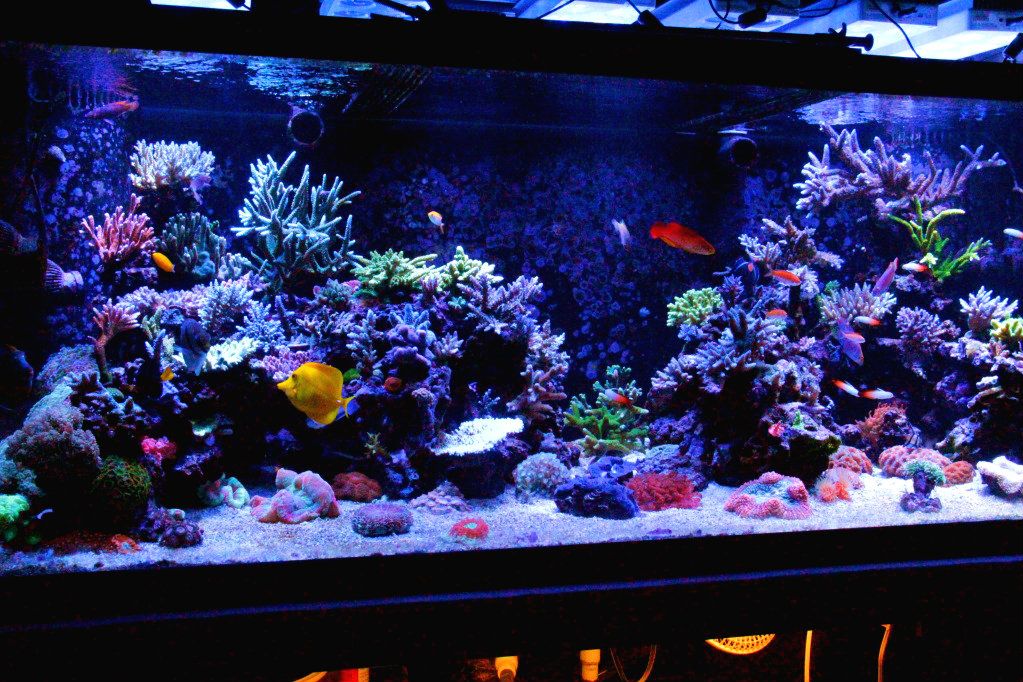
 |
|
#21
|
|||||
|
|||||
|
I've eaten, gone to the store, changed a diaper (kid's, not mine) and fed the dogs. Come back, still no pics!! sheesh..
__________________
Brad |
|
#22
|
|||||
|
|||||
|
Not planning on starting till the weekend, see this taking more than a couple of hours. Doesn't everyone here preach patience in this hobby??
|
|
#23
|
|||||
|
|||||
|
Yes, we preach it all the time. We just don't practice it very often

__________________
Brad |
|
#24
|
||||
|
||||
|
Quote:
Think of it this way, bacterial masses are governed by the same ecological constraints of any living population. That is, population = resources (in this case, food) x available real estate. In our tanks, resources, not real estates, are the limiting factor. More surface area does not ≠ more bacteria. More food does. To illustrate the point, let's use the example of bioballs and why they are generally regarded as a detriment to reef systems: Nitrate. But why? Why is liverock, which is just a big load of surface area not a NO3 factory, while efficient, human engineered substrates are? Think of it this way, bioballs have a higher surface area to volume ratio than the average piece of liverock, which is denser due to the crystalline nature of aragonite and how it is deposited by corals. Additionally, bioballs have the added advantage of being highly porous or "open", so all the surfaces are readily exposed to oxygen during operation. Going back to liverock. While it is true that liverock has a lower surface area to volume ratio, it also has a big thing going for it: "closed" surface area. Water permeates through the rock via diffusion. As it passes to the core of the rock, the aerobic bacteria along the way strip it of its dissolved oxygen. By the time water gets to the core of the rock, it is oxygen poor, allowing for anaerobic processes to take place (chiefly, mineralization of NO3). Back the idea of resource limitation -- if you add a porous, man-made substrate to the system, the populations of aerobic bacterias are naturally going to shift towards surface areas which are more ideal to their aerobic metabolisms. In essence, bioballs "steal" these aerobic populations, shifting them from the rock. This eventually allows oxygen laden water to penetrate deeper into the core of of the rock. So now we have a problem, resource limitation has reduced our system's capacity to mineralize NO3 (reduced anaerobic zones) while retaining it's NH4 and NO2 processing power. The end result? A rise in NO3 with no means to process it. Don't think the math works? Add a biofilter to your tank and watch your NO3's start to climb. Remember, NH4 is the limiting factor for NO3, and it was at zero before....    Anyway, segueing back into our initial statement (I know, I know, it was a long digression)... IF YOUR TANK HAS ZERO NH4, YOU HAVE LIKELY HIT THE LIMITING RESOURCE POINT FOR NH4 AND NO2 AND THE RESULTING AEROBIC BACTERIAL POPULATION DENSITY OF YOUR SYSTEM. ADDING MORE ROCK TO YOUR SUMP WILL NOT IMPROVE YOUR SYSTEM'S BIOLOGICAL CAPACITY ONE BIT. But Albert, won't the extra space allow me a buffer in case I accidentally overfeed or kill something? In a word, no. Why? for the same reason it took you a month to cycle your tank in the first place. A sudden influx of organic waste may be a bonanza for bacteria, but not one that they can capitalize on fast enough for your water parameters not to be affected. In addition, it is likely that you have more than enough unoccupied real estate in your system. Hint: Sand has HUUUUUGE surface area and can accommodate for many times more bacteria than the tank is probably supporting. But Albert, those guys with no rock and no substrate, how do they do it? Magic and vodka. But that's another topic for another class  HTH
__________________
This and that. |
|
#25
|
|||||
|
|||||
|
Thanks for the great explanation!
__________________
Brad |
|
#26
|
||||
|
||||
|
Thanks, I just wish I could edit out some poor grammar, haha!
__________________
This and that. |
|
#27
|
||||
|
||||
|
well said man

__________________
........ |
|
#28
|
|||||
|
|||||
 old tank, typical fruit stand look.  I went with a less is more approach. Left side is an island and right side a lagoon. I still ended up with more rocks then I anticipated in the DT but I really like it. Make sure you do account for coral growth which I didn't think would have been an issue in the 300 but think again.  semi recent picture, running out of room quick. I did sold off 4 of my large colonies to the lfs and its looking less crowded now. kinda...
__________________
Though a tree grow ever so high, the falling leaves return to the root. 300DD - 140DD  TOTM Fall 2013 |
|
#29
|
|||||
|
|||||
 Please excuse my ignorance or stupidity with this as I've read Albert's post a few times. Sump vs DT - basically flow to push the water through the rock? (obviously over simplifying the entire explanation) And, Brad, you have 100#'s in what size tank? Next question is then do I need 150 #'s in the 180? Last edited by Coralgurl; 09-21-2012 at 08:29 PM. |
|
#30
|
|||||
|
|||||
|
Quote:
No, I have that in a 180. So I would use anywhere from 90ish to 120, depending on porosity, shapes, etc.
__________________
Brad |